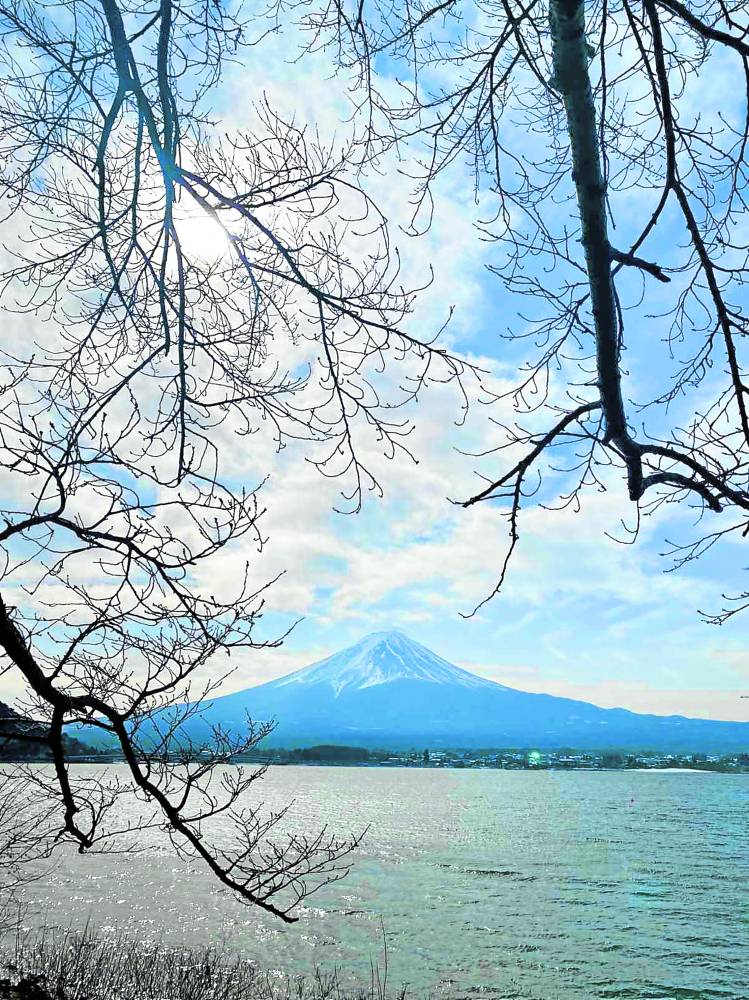
My main worry as I stepped off the plane at Narita was missing the pickup for the Wi-Fi router I booked online before the counter closed for the day.
COVID has affected the business hours for many establishments in Japan, such that if I missed the 9 p.m. closing, I would have to have it couriered to my hotel, the Wi-Fi company informed me via email.
“And it may take a couple of days,” the email said. Out of the question, since I would be in Tokyo for only a week. I needed Wi-Fi to get around.
Turns out, my worries were all for naught. Passing Japan immigration and customs was a breeze.
meltwater here is filtered through Mt. Fuji’s volcanic rocks such that tourists bring home bottles of it.
Though I was excited at the prospect of returning to Japan since the country announced last August that it would open tourism to non-tour groups by September—my last vacation shortly before the global lockdowns was in Sapporo—this Tokyo vacation was rather last-minute, after another trip fell through and I had already filed my leaves. Besides, I expected the line for visa application to be long (my five-year, multiple-entry visa expired in mid-2020).
Wrong again. While the lines were indeed very long on the Saturday I submitted my visa requirements at a travel agency in Dusit hotel (the room was packed, as many applicants were traveling for the first time in years, and many were traveling for the first time to Japan), getting the visa was quite fast. I got my passport back four days later.
Pre-entry procedures
At submission, the agency gives you instructions to create an account at Visit Japan Web (https://vjw-lp.digital.go.jp/en/) for quarantine procedures. This is the website where you submit your vaccination certificates at least 72 hours before arrival. There are no more pre-entry COVID tests required for vaccinated travelers, though the site lists the accepted vaccines.
You will receive an email confirmation that says your registration has been reviewed and approved, including a QR code that you present to quarantine inspectors before immigration. You’re encouraged to take screenshots of these messages and QR codes, in case you have no Wi-Fi upon entry.
Japanophiles are traveling to the country en masse now, so expect huge crowds—in public transportations and much everywhere else. It pays to plan ahead, especially when you take public transport—you don’t want to hold up lines at busy stations when you buy train tickets, because you don’t know where to go. Google Maps and Google Translate are your friends—and this is why mobile Wi-Fi is a must.
One of the things I love about Japan is that their train system is so efficient, it’s quite easy to course-correct when you make a mistake. Case in point, from Narita, I boarded the 8:34 p.m. train, when I should’ve taken the 8:43 p.m. train that would take me directly to my Tokyo hotel. Realizing my mistake, I quickly Googled where to get down and changed trains at another station. Minor hiccup.
Depending on your travel plans, get a Suica or Pasmo card, prepaid e-cards that you use to pay your fare on trains and other establishments. I simply bought a train pass via Klook (just scan the QR at ticket machines for the card ticket) and bought single-ride tickets for other train lines when needed. And again, if you’re a Japan newbie, cash is still king in that country (though it’s pretty easy to withdraw from ATM machines using an international card).
Anti-COVID measures
Pre-COVID, it was common to see the Japanese wearing masks in public, especially during the colder months (aka flu season), and that hasn’t changed. But unlike in the Philippines where mask mandates have eased, in Tokyo only at restaurants and cafes will you see people with masks off, such that I never dared remove mine in public, even at a near-empty park.
Like here, you still see remnants of anti-COVID measures. Some restaurants have acrylic or plastic partitions between tables, and they point you to the hand-sanitizer dispenser as you enter. Similar acrylic partitions were in place on a tour bus I took to Mt. Fuji. At public restrooms, electronic hand dryers are deactivated.
At Shibuya Sky, the social media-famous hot spot for 360-degree views of the city, which opened end of 2019 and thus still new to many tourists, the lines are so long that COVID monitoring is more high-tech with thermal imaging scanners. (Book your tickets online as entry is time-sensitive and slots fill up pretty quickly; best to go at sunset.)
Leave room for konbini and Don Quijote pasalubong shopping in your suitcase—quite a challenge when you’re traveling in winter with big coats and such. Ah, just imagine the scene at the Cebu Pacific check-in counter at Narita, as Pinoys struggled to repack their overweight, overstuffed suitcases!
On this trip, I didn’t really have a planned itinerary. I only wanted to soak in the Tokyo vibe that I so missed by visiting familiar places, and discover new ones in the process, and was I glad I did. And I finally got to tick off two things on my must-dos that I kept putting off after many visits, thinking there’s always a next time: go to Tsukiji Market, and see Mt. Fuji from a closer vantage point, not from the top of a Tokyo hotel two hours away.
Don’t wait until another pandemic derails your travel plans: Book that trip.